Cicada orni (Ash Cicada) photos by Iván Jesús Torresano Garcia from Spain.
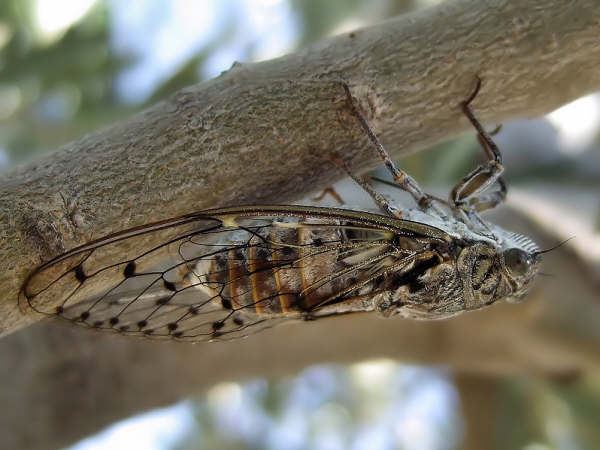
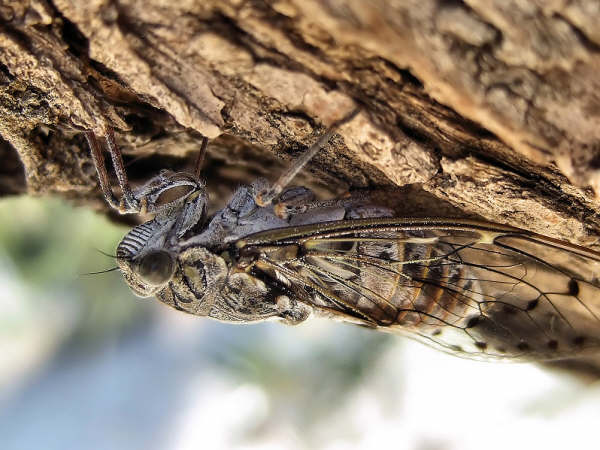
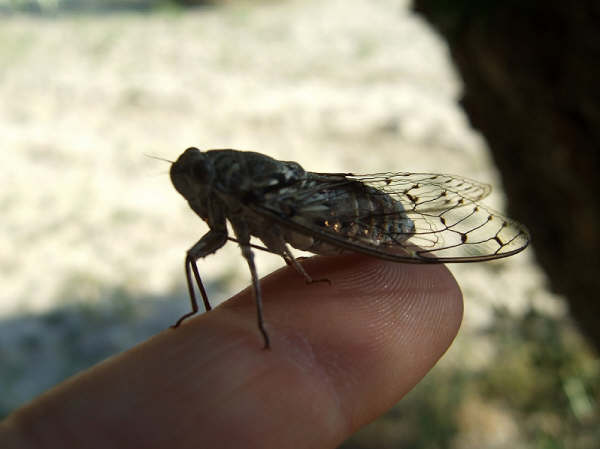
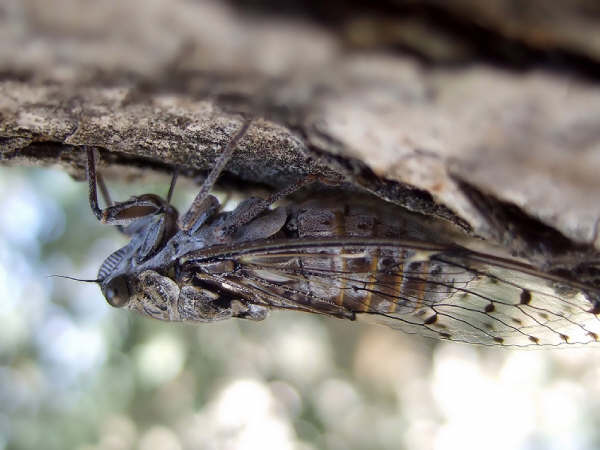
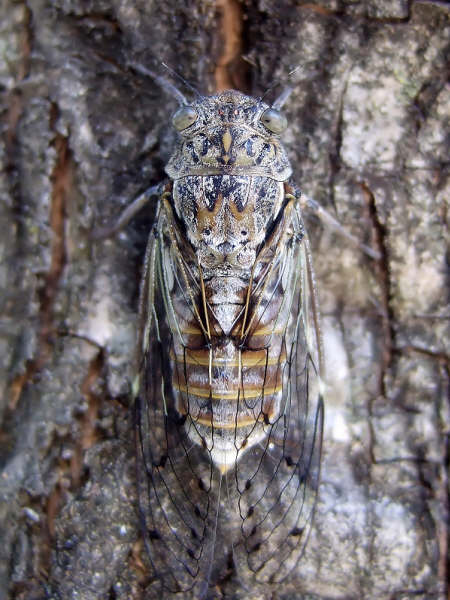
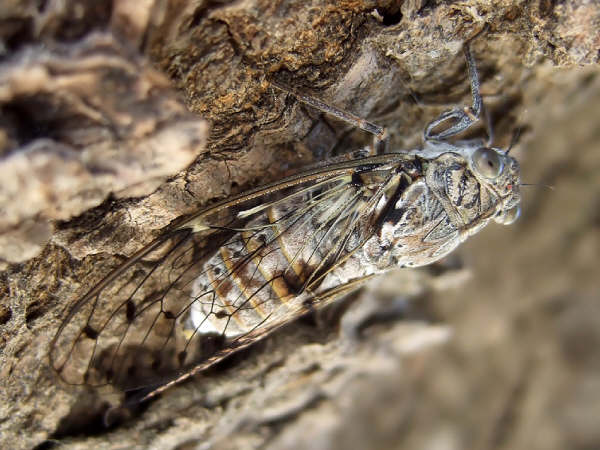
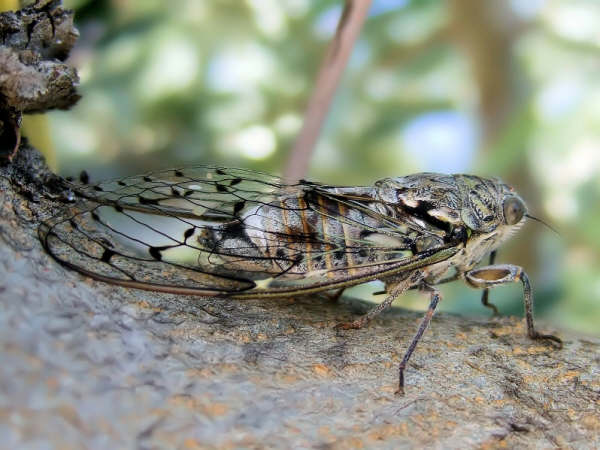
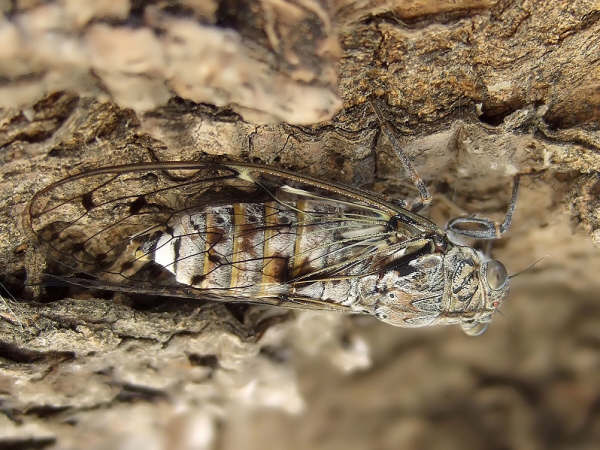
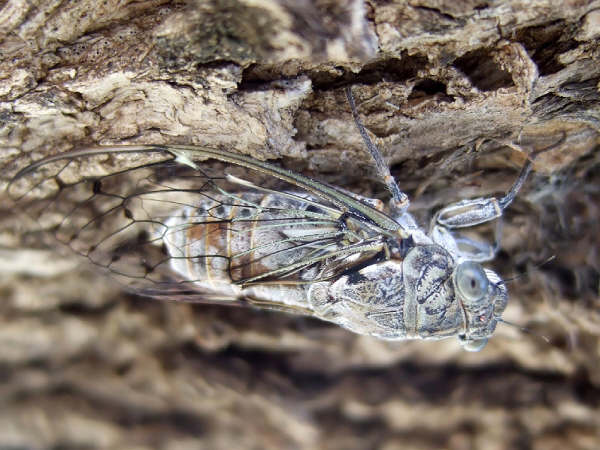
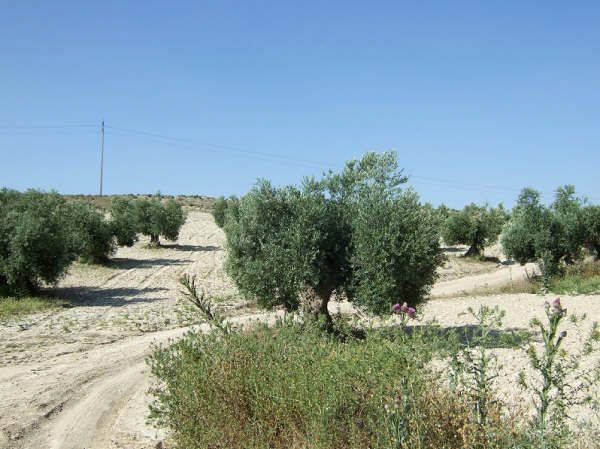
Cicada orni (Ash Cicada) photos by Iván Jesús Torresano Garcia from Spain.










Cicada orni photos by Iván Jesus Torresano García. Spain. 2014.
Cicada orni (Ash Cicada) blend in so well with their habitat. They’re very hard to see on the bark of a tree.
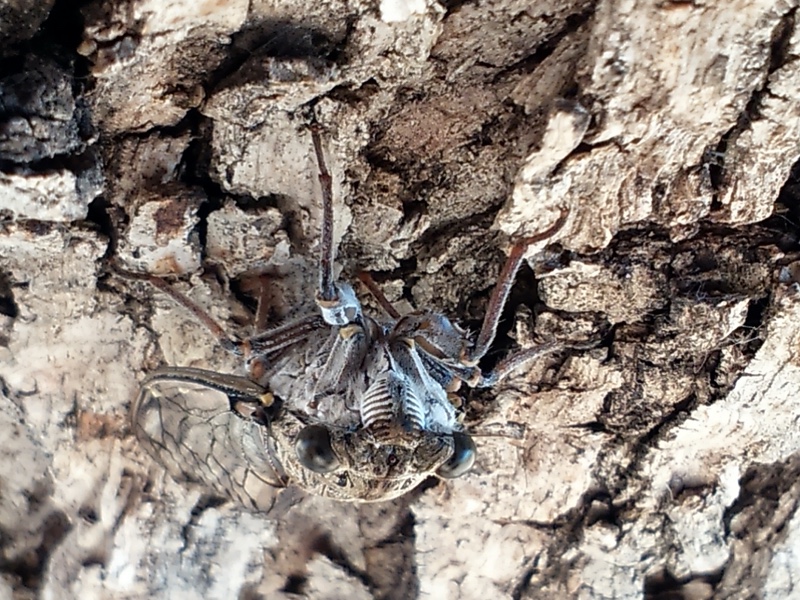
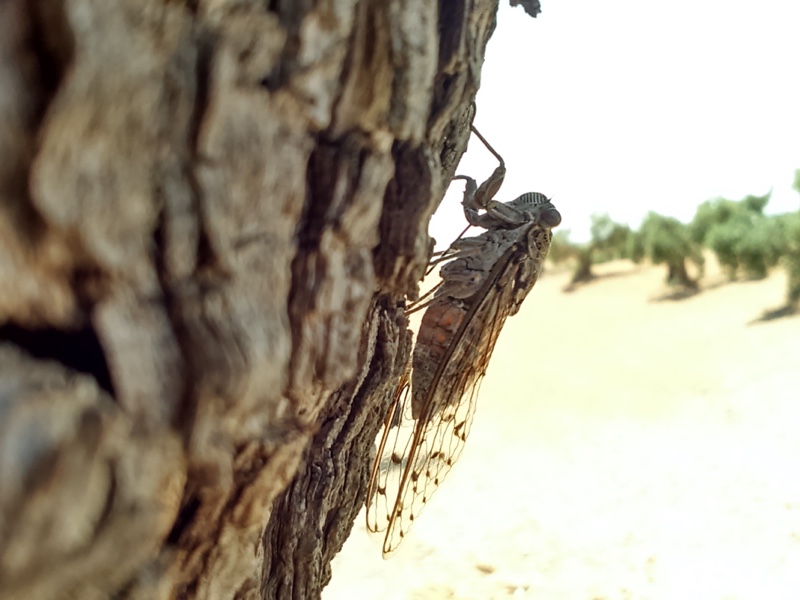
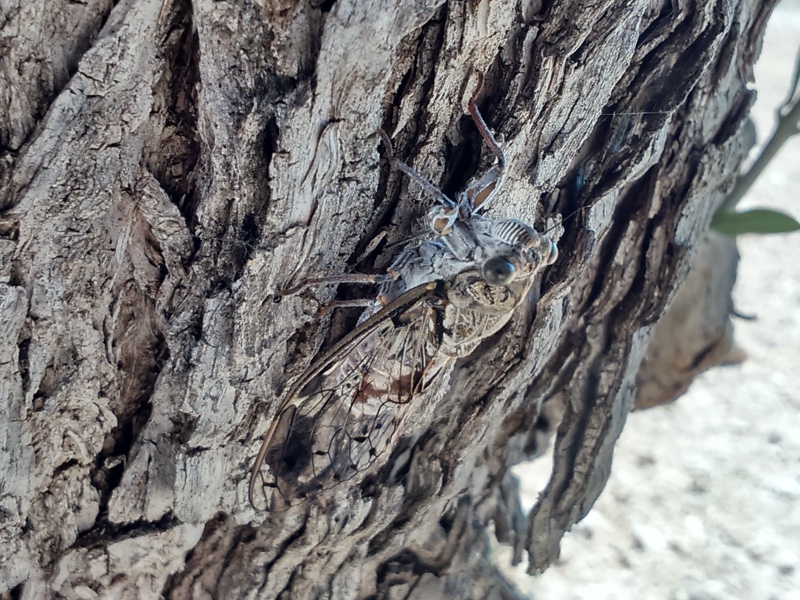
Cicada orni (Ash Cicada) is a cicada found in many European & Asian countries, including Spain, Turkey, Albania, Austria, Cyprus, Czechoslovakia, Egypt, France, Greece, Hungary, Israel, Italy, Jordan, Lebanon, Romania, Switzerland, and Yugoslavia. It is also known as the Ash cicada.
Photo by Iván Jesus Torresano García taken in Spain.

A video by Iván Jesus Torresano García taken in Spain.:
Scientific classification:
Family: Cicadidae
Subfamily: Cicadinae
Tribe: Cicadini
SubTribe: Cicadina
Genus: Cicada
Species: Cicada orni Linnaeus, 1758
According to iNaturalist Cicada orni is around between June and August. They peak in July.
For more information about this cicada visit SONGS OF EUROPEAN SINGING CICADAS.
Cicada pennata (Distant, 1881) is a cicada found in Guatamala.
Cicada pennata (Distant, 1881) was formerly known as Tettigia pennata.
Scientific classification:
Family: Cicadidae
Subfamily: Cicadinae
Tribe: Cicadini
SubTribe: Cicadina
Genus: Cicada
Species: Cicada pennata (Distant, 1881)
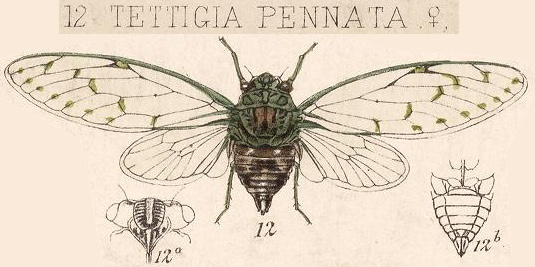
The image says Tettigia pennata, but the newest name of this cicada is Cicada pennata.
Species description by W. L. Distant:
Head, pronotum, and mesonotum greenish. Head with the frontal marginal angles, a transverse streak on lateral margins, inner margin of eyes, and area of the ocelli black; ocelli red. Mesonotum with a central longitudinal suboblong spot, rounded posteriorly and angulated anteriorly, on each side of this a short oblique streak behind eyes, and a D-shaped spot near each lateral margin black. Mesonotum with four large, central, and somewhat irregular black-bordered obconical spots, a black spot on each lateral margin, and two small spots of the same colour in front of the basal cruciform elevation. Abdomen above dull testaceous, with the basal angles and anal appendage greenish, somewhat thickly clothed with white pile. Body beneath greenish; transverse striae to face, bases and apices of coxse, apex of rostrum, segmental incisures, and inner margins of anal appendage black. Legs greenish, apices of femora black, apices of tibiae and tarsi dull testaceous, tarsal claws black. Tegmina pale hyaline. Neuration of basal half greenish, remainder fuscous ; base of first ulnar area, transverse vein at base of second ulnar area, a central spot on the longitudinal vein enclosing third ulnar area, and transverse vein at base of eighth apical area, and claval margin black ; a prominent white opaque spot at base of first ulnar area. Anastomoses, and a submarginal row of spots situated on veins, pale fuscous. Wings pale hyaline; veins fuscous, with some of the discal ones greenish.
The face is globose, strongly and transversely striate, with a central longitudinal sulcation; rostrum reaching the posterior coxae; head small, with the eyes very globose, and much narrower than base of pronotum.
Long. 17 millim., exp. of tegm. 66 millim.
Cicada pallida Goeze, 1778, is a cicada found in Mexico.
Scientific classification:
Family: Cicadidae
Subfamily: Cicadinae
Tribe: Cicadini
SubTribe: Cicadina
Genus: Cicada
Species: Cicada pallida Goeze, 1778
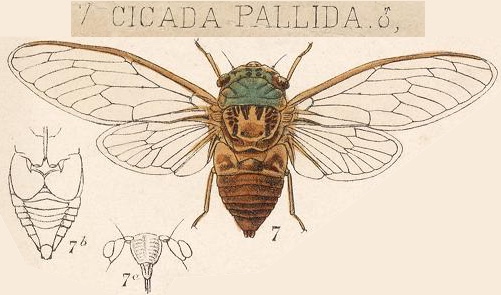
Cicada pallida species description by W. L. Distant:
Head pale greenish, with two small transverse spots on center of front, two larger ones near inner margins of eyes, and two large lunate spots, partly surrounding the two posterior ocelli, black. Pronotum pale greenish and unicolorous. Mesonotum ochraceous, with two large obconical spots commencing on anterior margin, on each side of these a smaller and more oblique spot of the same description, a broken submarginal longitudinal fascia, and two small rounded spots on posterior portion of disk fuscous. Abdomen above ochraceous. Head beneath pale greenish. Sternum, legs, opercula, and underside of abdomen ochraceous. Tegmina pale hyaline; venation of about basal two thirds ochraceous, that of apical third fuscous. Wings pale hyaline; basal half of venation ochraceous, apical half fuscous.
The face is large, robust, and convex, faintly transversely striate, and with a faint central raised longitudinal line. Opercula rounded, divergent, meeting only at anterior angles, posteriorly reaching apex of first abdominal segment. Tympana somewhat large and prominent. The body alone is sparingly pilose, the frenum most densely so.
Iván Jesús Torresano García send us a dozens of cicada photos from Spain, where he resides. According to Iván June is a peak time for cicadas in Spain. Cicadas common to the area are: Cicada orni, Lyristes (old Tibicen) plebejus, Tettigetta argentata, Hilapura varipes, Euryphara contentei (miniature), Tibicina tomentosa, and finally the brownish “Barbara Lusitanica Cicada”.
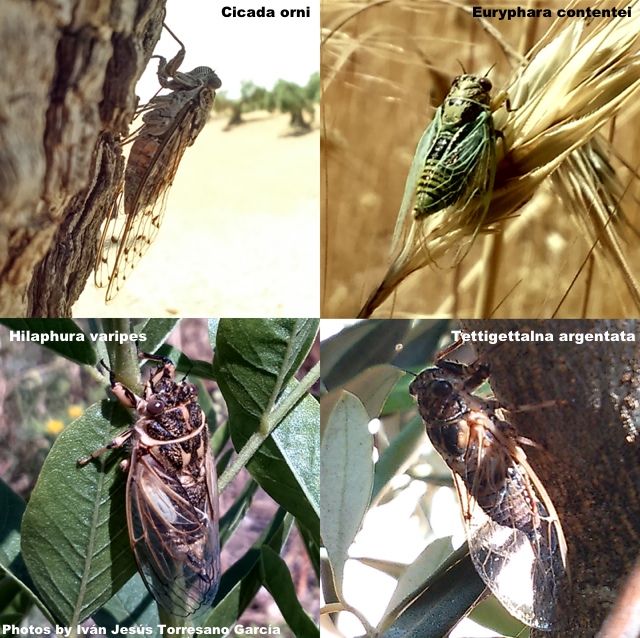
Galleries:
Here are some of these cicadas captured by Iván.
Cicada orni:
Cicada orni is one of the most common cicadas in Spain and all of Europe. The are incredibly well camouflaged.
Tettigettalna argentata:
Hilaphura varipes:
Euryphara contentei:
For more information of the cicadas of Spain, visit Songs of European Singing Cicadas.